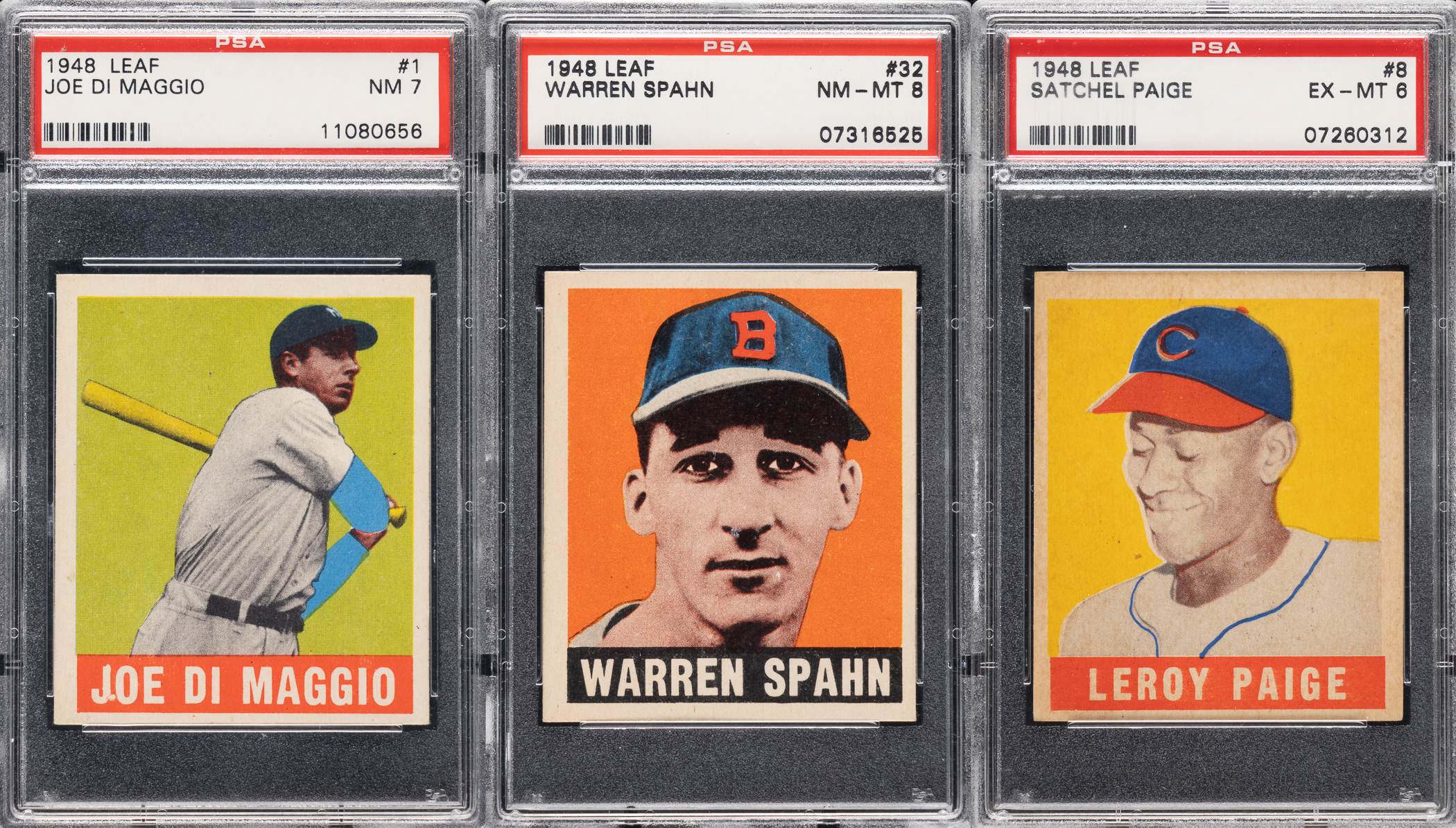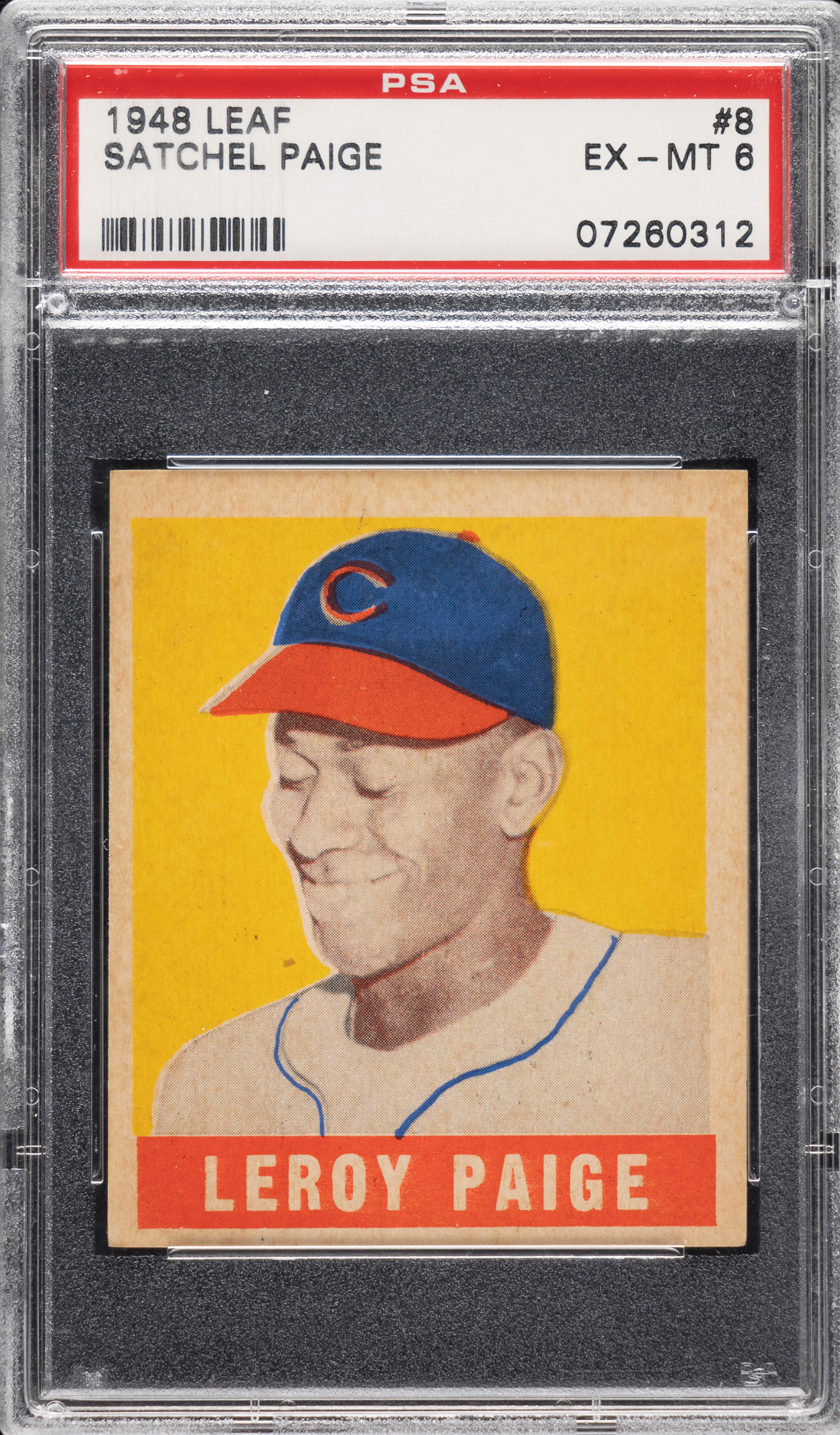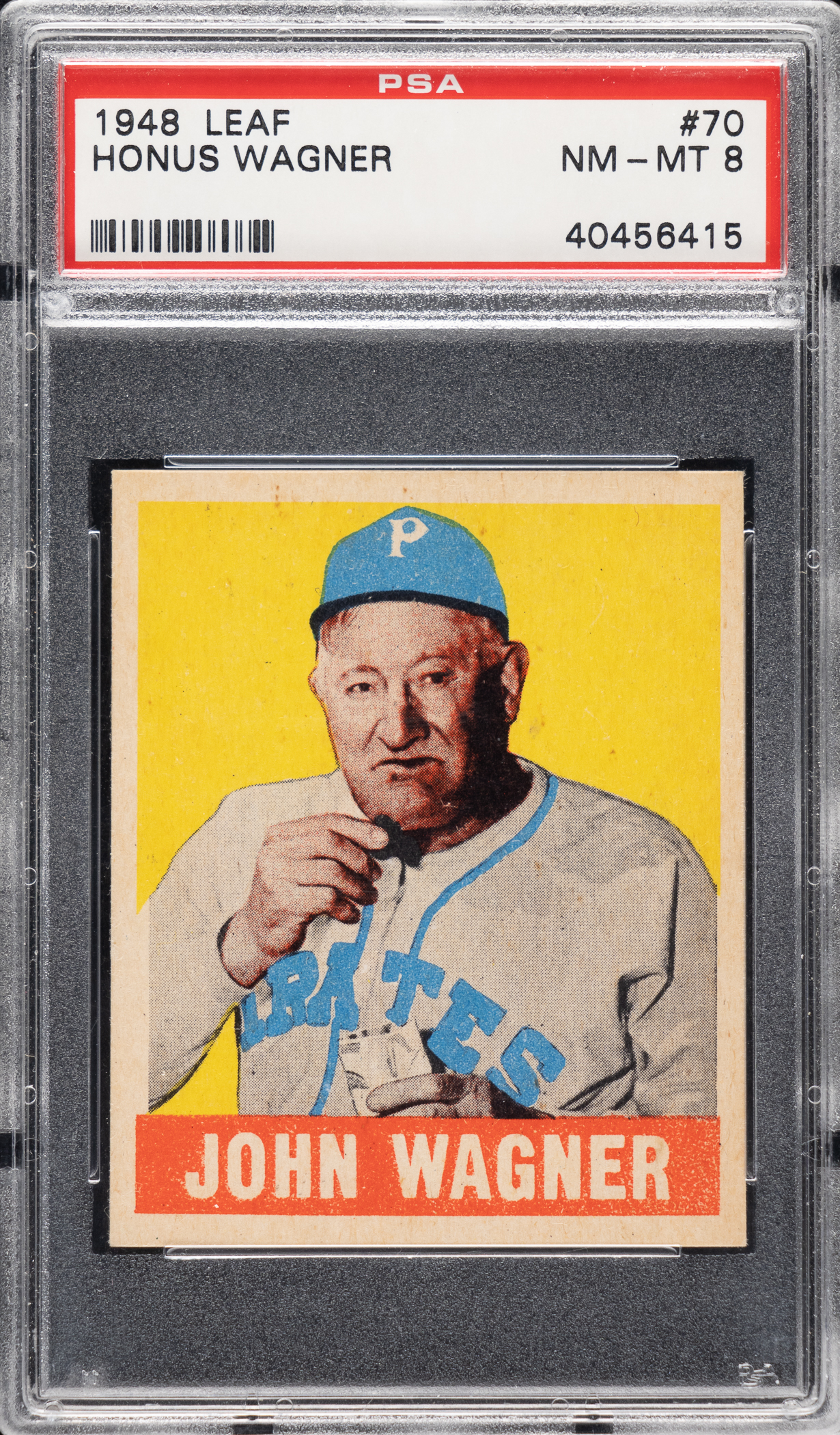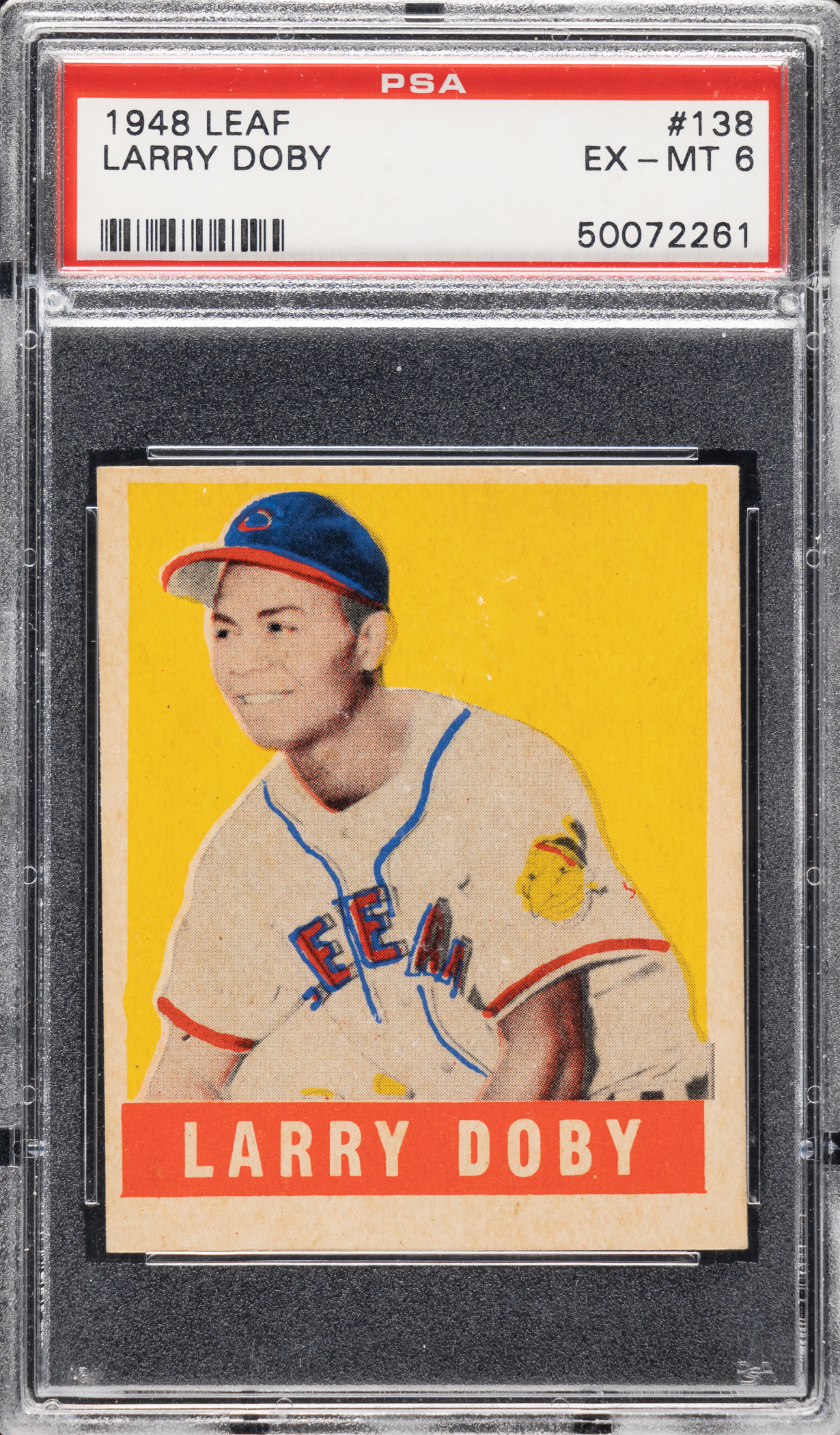by David Seideman
Mike Ryan was the bravest of the brave throughout his long career as a fireman rushing in and out of burning buildings in Los Angeles. For the past 35 years, he’s also shown bravery in his approach to baseball card collecting. He hasn’t backed down from the biggest challenges within the hobby. He acquired 512 of the 524 cards in the 1909-1911 T206 “Monster Set", all in at least very good condition, including all four Cobbs. Ryan also completed the 1933 Goudey set, including all four Babe Ruths, in prime condition.
But his most amazing feat is completing not one but three of perhaps the best looking 1948 Leaf Baseball sets, upgrading their condition each time he did it. “The thing that is most important to me is registration,” he explains. In simple terms, registration is “off” when any element of the printing job is misaligned. The result is blurry pictures, which were a common flaw within the Leaf set.
Growing up in southern California, Ryan, 87, never saw the Leaf baseball cards because they were not distributed on the West Coast. “I started playing baseball when the set came out, so I connected with it and many of the players. I love it.”
Since 1988, Ryan has painstakingly cherry-picked the clearest and highest quality Leaf cards on the market. The result was a complete 98-card set, which will now be offered as individual lots as part of Robert Edward Auctions' Spring 2023 Catalog Auction, running from April 6 to April 23. Prior to consigning, he took out a few commons with sentimental meaning to him, but he’s turned over all the key cards of Hall of Famers and rookies that make the set so special.
Leaf was among the major baseball issues released after World War II, and it was the first full-color set produced during that era. Many collectors consider the bold images and backgrounds one of the most attractive post-war designs. At first glance, cards from the set almost resemble Andy Warhol’s silkscreen of Marylin Monroe.
The two most notable cards are the Jackie Robinson and Satchel Paige rookies, the latter notoriously rare with a total population of just 152. Ryan’s Robinson and Paige are both PSA EX-MT 6. Other key rookie cards from Ryan’s 1948 Leaf set are Hall of Famers Stan Musial (PSA NM 7) , Warren Spahn (PSA NM-MT 8), Ralph Kiner (PSA NM-MT 8), Hal Newhouser (PSA EX-MT 6 ), George Kell (PSA NM 7 ), and Larry Doby (PSA EX-MT 6). His set also contains Joe DiMaggio (PSA NM 7), Babe Ruth (PSA NM-MT 8), Ted Williams (PSA NM+ 7.5 ), and Bob Feller (PSA NM 7).
The tribute to Honus Wagner (PSA NM-MT 8) when he was a Pirates coach is brimming with irony because he’s in the process of putting a thick wad of chewing tobacco in his mouth, flying in the face of the theory that he objected to use of his image on T206s because it promoted tobacco to children.
“Exactly half of the cards were severely short-printed, to the point that it is incredibly difficult to piece the set together without a lot of patience, time and money,” notes The Cardboard Connection.
Ryan had the patience and took the time. In the 1990s, long before the current hobby boom and advent of the Internet, he spent his weekends criss-crossing Los Angeles to visit endless shops and shows to acquire a lot of his cards.
But he didn’t always have the money, even though he sold his T206 and Goudey sets a decade ago to improve his Leaf sets. For example, he once had to pass up a $40,000 Hal Newhouser that met his high standards. Newhouser - who remains the only Major League pitcher to win back-to-back MVP Awards - is a short print, with only 119 examples graded to date by PSA, compared to the most common, Jackie Robinson, with 1,370— nearly a 12 to one ratio. As scarce as Newhouser’s numbers make him, he isn’t even the rarest when one looks at the PSA data. That title goes to Henry Majesky with only 43 cards graded.
“They are really short prints, not like some of these Topps sets with high numbers,” Ryan says, alluding to the practice by Topps of issuing its sets in multiple series, oftentimes producing the final series in the smallest quantities as the focus shifted to football cards deeper in the baseball season. “You see [way] more and more of those.”
While the scarcity of the cards is on full display with a review of Population Report data as well as anecdotal evidence from collectors, the other incredible challenge for collectors like Ryan is the quality control of Leaf, which is some of the poorest of any card set ever produced. The most obvious indication of this is the blurry images, but cards from this set are also known for centering issues, print lines across the front, and low-quality paper stock, which makes sharp corners and clean edges hard to find. “Another point that made collecting so enjoyable is that you buy the card, not the holder,” Ryan says. “So many were screwed up.”
If you go on eBay or attend a big show and look at Leafs, odds are they suffer from colors bleeding into each other or have stray black ink dots and lines running across the center like stripes on a zebra. Then there are the infamous “ghost images” resulting from sheets and cards stacked before the ink dried, leaving a reverse print of the backs on the fronts. “My Leaf players don’t have red noses,” Ryan says proudly. “Their eyes aren’t blood shot. I don’t like red mustaches or eyebrows, either. There’s no bleeding of the yellows, blues or other colors. They are clean!”
Adding to Ryan’s long standing connection to the Leaf set is the close connection he had to some of the subjects. George Vico, the future Tigers first baseman, was a senior in Ryan’s high school when he was a sophomore. Andy Pafko, the Cubs’ slugging third baseman and outfielder, was Ryan’s favorite player when he played for the Los Angeles Angels in 1946. In 1948, Pat Seerey became an overnight sensation when he became the fifth big leaguer to hit four homers in one game. The ’48 Leaf is his only card. Later in life, Jerry Priddy, the St. Louis Browns’ defensive whiz at second base, was Ryan’s friendly neighbor.
Ryan has reached a point in life when many collectors decide to sell. “I’m not getting any younger,” he says. “It will help my kids and grandkids.”
The hobby will continue in the family. His son, Tom, bonds with him by collecting early military, boxers, bicycle riders, and golfers. He’s also working on the 1933 216-card Goudey Indian set.
Meanwhile, Ryan isn’t leaving the hobby, instead setting his sights on the extremely obscure and rare 50-card 1935 Schutter-Johnson Candy Company Baseball set, which is chock full of Hall of Famers such as Babe Ruth, Lou Gehrig, and Dizzy Dean who are depicted in a fairly crude fashion like 1920s strip cards. Each one illustrates baseball tips such as Christy Mathewson’s fade-away pitch.
“I have six grandsons from Tee-ball to JV,” Ryan says. “None of them are into cards. Maybe these instructional Schutter-Johnsons will get them interested.”
For the record, there are 695 Schutter-Johnson cards in existence in contrast to 28,044 Leafs. Ryan lives for challenges, no matter how daunting.
This story was originally published on Sports Collectors Daily: https://www.sportscollectorsdaily.com/1948-1949-leaf-baseball-set-collector-high-grade/





